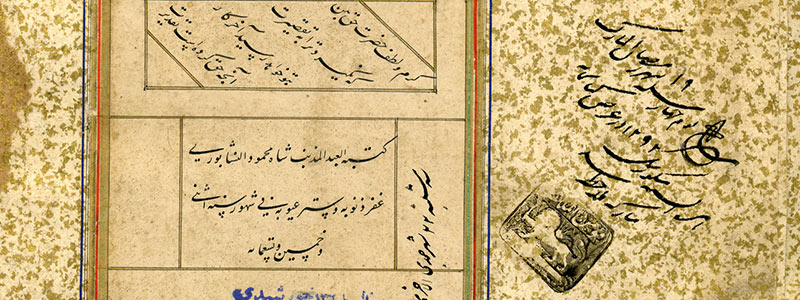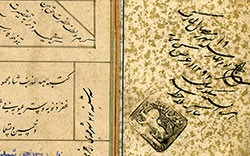Shāh Mahmud, known as Zarrin Qalam (“the Golden Pen”), was born around 1495 CE in Nishāpur and learned the fundamentals of calligraphy from his maternal uncle, ‘Abdi Nishāpuri and later from Soltān Mohammad Khandān.
Though his very first dated writings (from 923 AH/1517 CE) relate to the reign of Shāh Ismā‘il I, it is very likely that in his youth he entered the court of Shāh Tahmāsp Safavi (1524-1576 CE). After living in Tabriz, around the time when the Safavid capital moved from Tabriz to Qazvin, he immigrated to Mashhad where he lived and occupied himself with writing books in Nasta‘liq until the end of his life.
He taught a number of students, among them Salim Nishāpuri, Hājj Mohammad Tabrizi, Mohammad Hosayn Bākhrazi, Soltān Mahmud Torbati and Qotb-al-Din Yazdi.
In a span of almost sixty years, from 1517 CE to 1574 CE, Shāh Mahmud wrote a number of manuscripts in addition to several copies of collections of "Forty Hadiths." Among his most important works are the first Qur’an copied in Nasta‘liq (which is now kept in the Topkapi Museum in Istanbul) and the Khamsa-ye Tahmāspi (which is held in the British Museum).
The last of his dated works was written in 982 AH/1574 CE, evidence that he lived in Mashhad until that time. In biographies he is often described as a dervish and is reported to have also produced lyrical writings.




